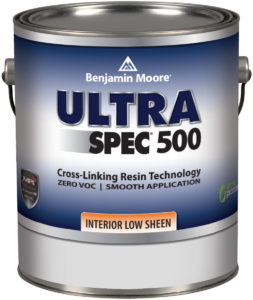 If you’re thinking about painting in your home, you may have heard the term “VOCs” mentioned as something to avoid if possible. We at Freedom generally use a zero-VOC paint for interior jobs (pictured).
If you’re thinking about painting in your home, you may have heard the term “VOCs” mentioned as something to avoid if possible. We at Freedom generally use a zero-VOC paint for interior jobs (pictured).
But just what are VOCs, and why do we avoid them when we paint in our clients’ homes?
VOC stands for “Volatile Organic Compound.” “Volatile” in this case means a boiling point below room temperature, which means evaporation, which means chemicals being released into the air as vapor. Lots of harmless chemicals do that; in fact, a lot of plants contain VOCs that are used to attract animals and more.
But some VOCs are not so pleasant. Formaldehyde, for instance, will start to evaporate at around -2 °F. Paint often contains many other harmful VOCs such as aliphatic hydrocarbons, ethyl acetate, glycol ethers, and acetone.
Typically a very short exposure doesn’t seem to do much harm, though if you’ve ever gotten a headache around fresh paint, VOCs are probably to blame. But long-term exposure can cause lasting harm. And indoor paint can continue to release toxic gases into the rooms of a home or office over many months… even after the fresh paint smell is gone.
VOCs have been shown to cause eye and skin irritation, headaches, fatigue, dizziness, and nausea; some have called it “sick building syndrome.” Even worse, it’s been shown that children can develop permanent respiratory, allergic, and immune complications from VOC exposure. The EPA now regulates VOCs, but they still aren’t eliminated from many paints.
As mentioned, we use an excellent zero-VOC paint for interior walls and trim, Benjamin Moore’s Ultra Spec. Not only is it zero-VOC and low odor, it even qualifies for LEED credit where applicable… not to mention that it’s beautiful and durable. For customers who are particularly concerned we can work with you on using low- or zero-VOC paint for ceilings and exteriors as well.